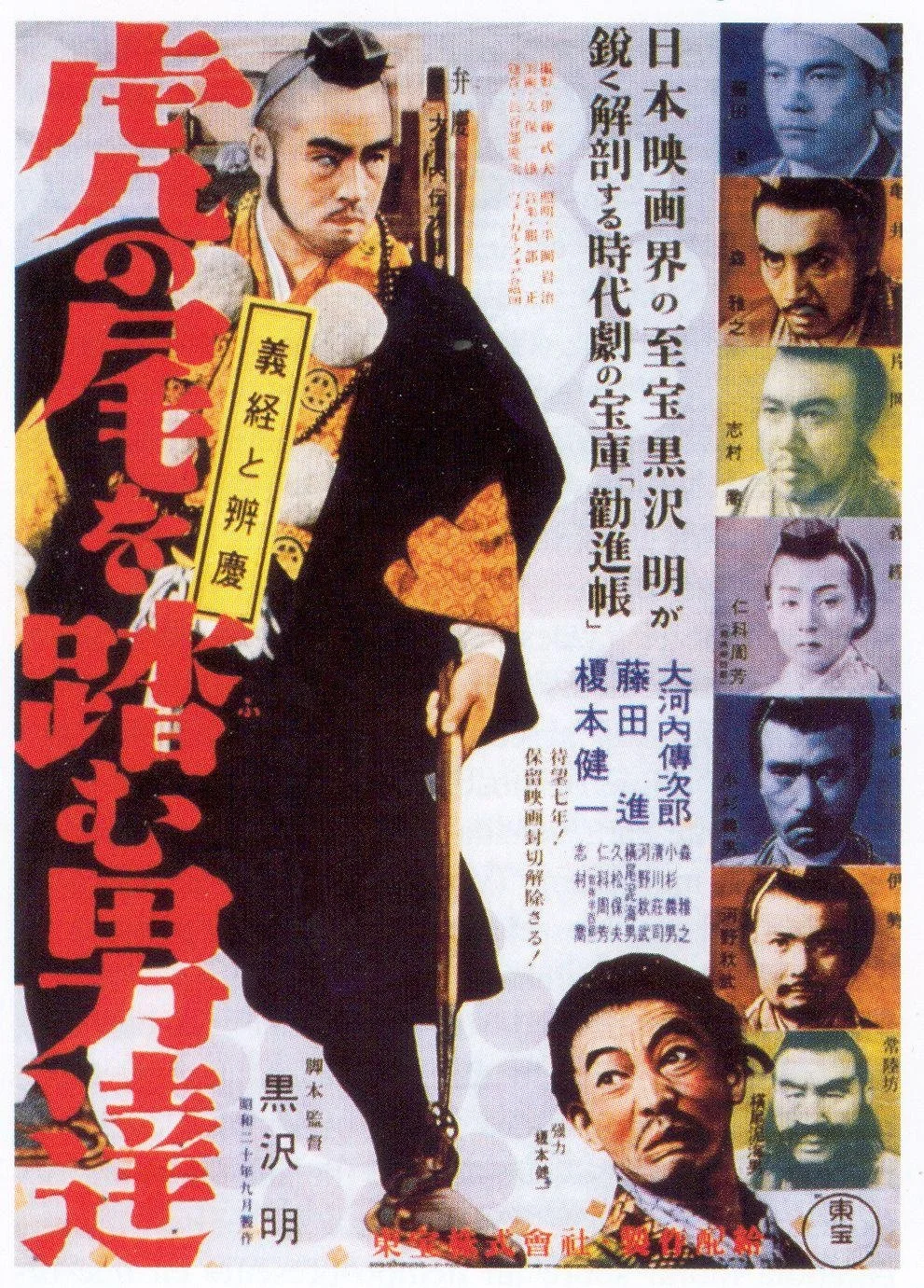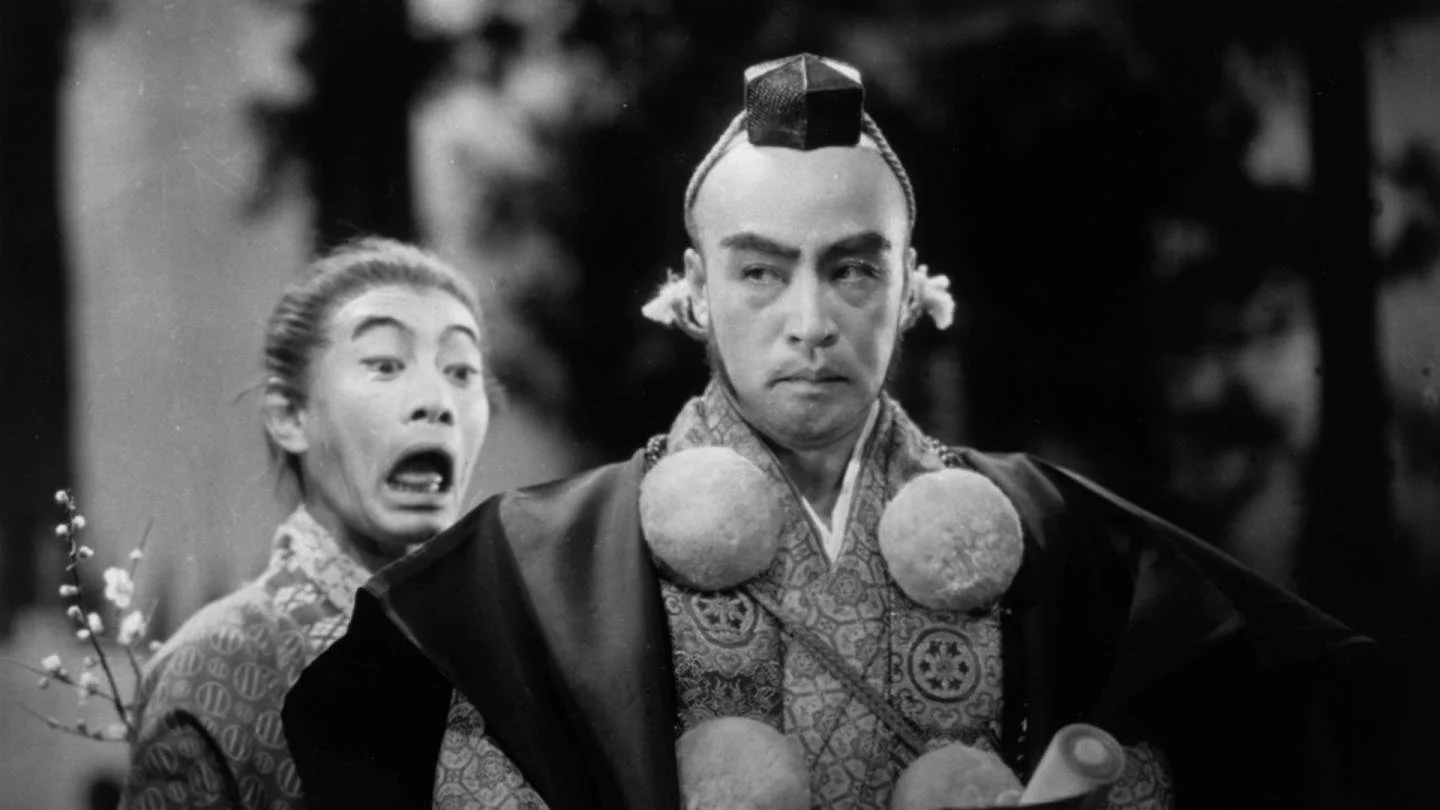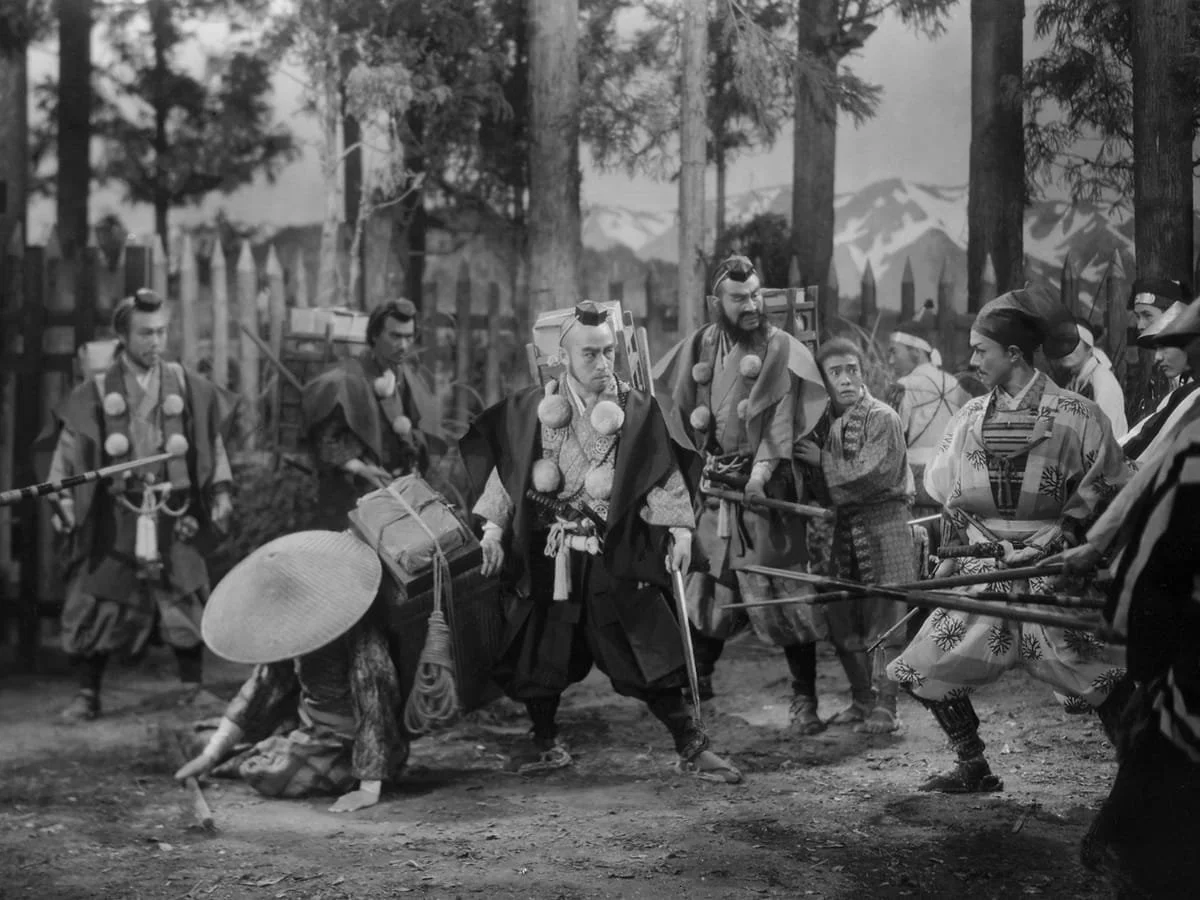SKETCH BOOK: Akira Kurosawa's THE MEN WHO TREAD ON THE TIGER'S TAIL (adap & dir by Akira Kurosawa, Japan, 59mns, 1945)
It is sometimes (wrongly) accepted wisdom that Kurosawa's true auteur career didn't begin until DRUNKEN ANGEL, his 1948 movie which he himself said was the first one in which he had total control. Before that, it is true that Kurosawa had to answer to war time censors and studio heads. Many describe this as an apprenticeship period where Kurosawa bided his time and sharpened his craft.
And while DRUNKEN ANGEL certainly is his strongest movie up to that time, there are several movies Kurosawa made between 1943-1948 that feel every fiber a Kurosawa movie. If there's interference or tampering, it's hard to see it now eighty years later.
THE MEN WHO TREAD ON THE TIGER'S TALE feels like a brilliant rough draft for sequences and approaches Kurosawa will employ in later masterpieces like SEVEN SAMURAI (1954) and THE HIDDEN FORTRESS (1958).
The story, about a group of loyal samurai smuggling their wrongly hunted Lord across enemy lines all disguised as monks and porters, is filled with the themes and potentials Kurosawa relishes. There are Kurosawa repertory players already in the cast (including Takashi Shimura) and the editing, framing, storytelling, and filmmaking are already identifiably Kurosawa.
The comedic relief of the Porter character (here seen behind the lead Samurai/Adviser) was a Kurosawa addition to a classic legend. It infuriated Japanese censors and may be too broad but still shows Kurosawa’s genius in understanding the need for varied tones.
The movie, clocking in at a fleet 59 minutes, is constructed around a dynamite central sequence where the group must somehow convince a magistrate and his garrison of suspicious border guards stationed especially to find them that they are NOT the disguised group they are looking for.
It is a cracker jack set up and Kurosawa builds the tension masterfully, complicating everything with unexpected twists and turns.
The movie is based on famous Kabuki and Noh plays which reverentially show the same incident. Kurosawa added a comedic porter character to undercut the self-seriousness of the source material which does well to vary and complicate the tone and thus sharpen the integrity of the piece as a gripping movie. The performance by the lead samurai Benkie (Denjiro Okichi) is riveting as he must think on his feet moment to moment as new seemingly impossible obstacles are put in his path.
Made during World War II, the Japanese censors refused to screen the movie because they felt Kurosawa was being disrespectful to a revered bit of history with the comedy. After the war, the American forces refused to release the movie suspicious it was glorifying feudal ways. This probably portended that Kurosawa had done a great job since it pleased no one with a vested interest in propaganda. The movie only came out in 1952 when everything calmed down and Kurosawa was famous for 1951's RASHOMON.
What we have now, 80 years later, is a fascinating sketchbook of Kurosawa ideas and approaches that are already stunning. But will be refined to a kind of sublime cinema in the decades after.
Craig Hammill is the founder.programmer Secret Movie Club
The majority of the 59 minute movie takes place on one set-the Magistrate’s gate that will either be the death or deliverance of the group smuggling the wanted man. Kurosawa makes the most of this limited location.



